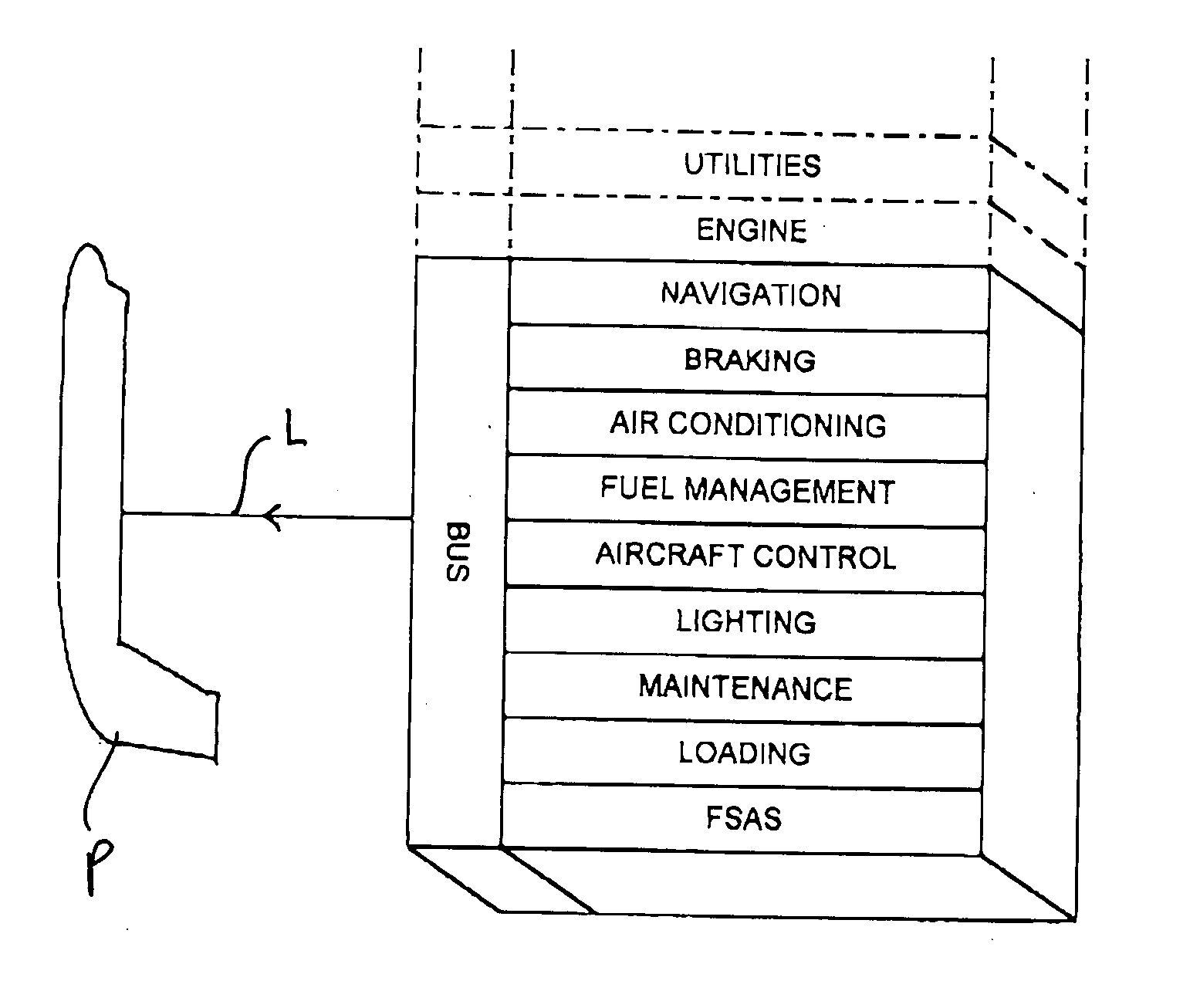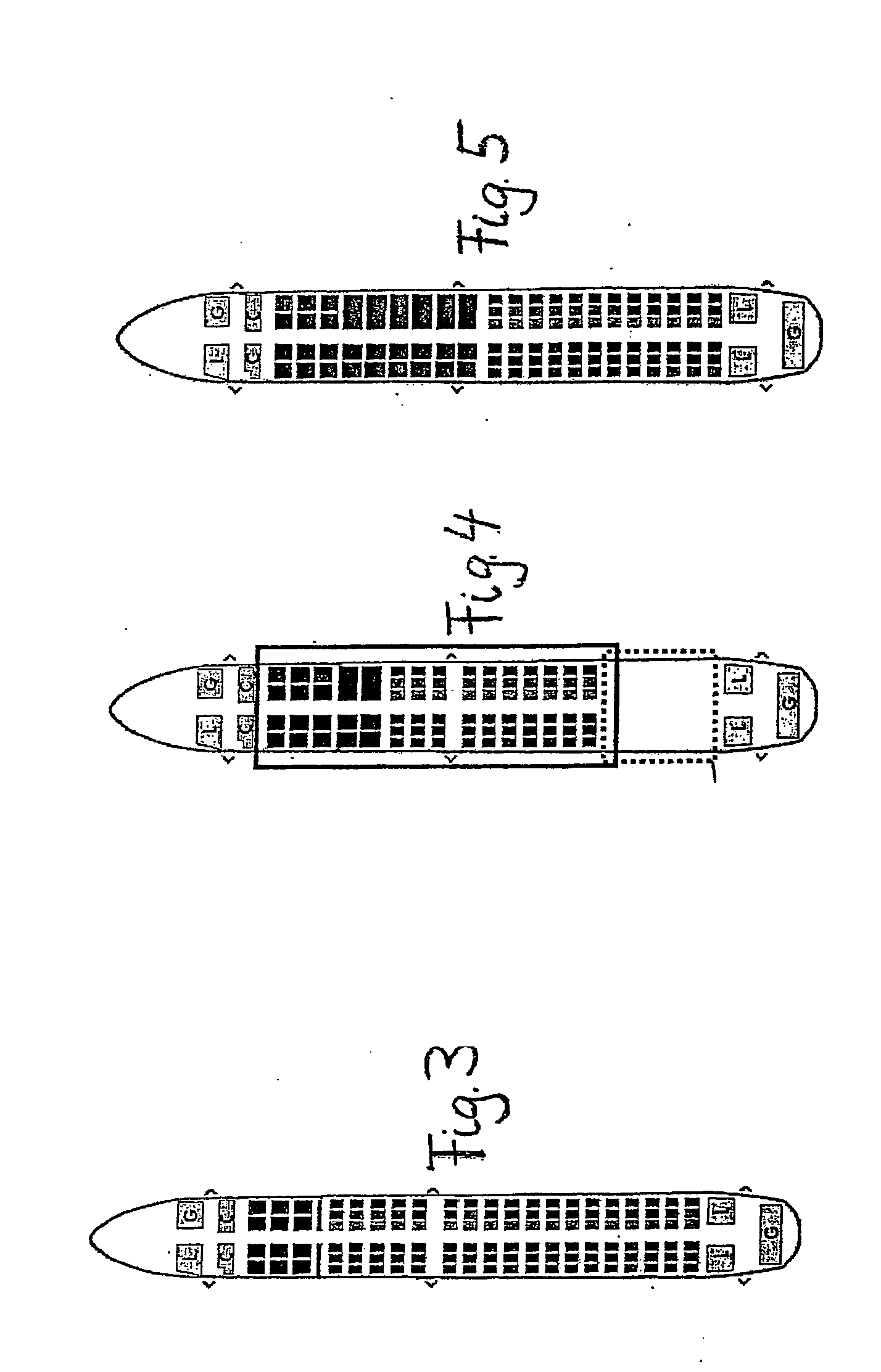Method and device for adapting the seat row arrangement in passenger planes according to need
- Summary
- Abstract
- Description
- Claims
- Application Information
AI Technical Summary
Benefits of technology
Problems solved by technology
Method used
Image
Examples
Embodiment Construction
[0030]FIG. 1 shows a schematic illustration of flight routes between a central hub and destination airports A, B, C and D. By way of example, the starting point here will be a passenger plane whose normal configuration has 30 seats in Business Class and 90 seats in Economy Class. If the current requirements of the connection between the hub and the destination airport A are now considered, it may be the case that, in fact, for the flight from the hub to the destination airport A, 28 Business Class seats and 60 Economy Class seats are required whereas, on the return flight from A to the hub, 35 Business Class seats and 68 Economy Class seats are required. On the other hand, on the connection between the airports C and D, 21 Business Class seats and 60 Economy Class seats may be required. It can readily be seen that, with a standard configuration of the seat row arrangement with a fixed number of Business Class seats and Economy Class seats, an efficient use of the existing cabin spac...
PUM
 Login to View More
Login to View More Abstract
Description
Claims
Application Information
 Login to View More
Login to View More - R&D
- Intellectual Property
- Life Sciences
- Materials
- Tech Scout
- Unparalleled Data Quality
- Higher Quality Content
- 60% Fewer Hallucinations
Browse by: Latest US Patents, China's latest patents, Technical Efficacy Thesaurus, Application Domain, Technology Topic, Popular Technical Reports.
© 2025 PatSnap. All rights reserved.Legal|Privacy policy|Modern Slavery Act Transparency Statement|Sitemap|About US| Contact US: help@patsnap.com



